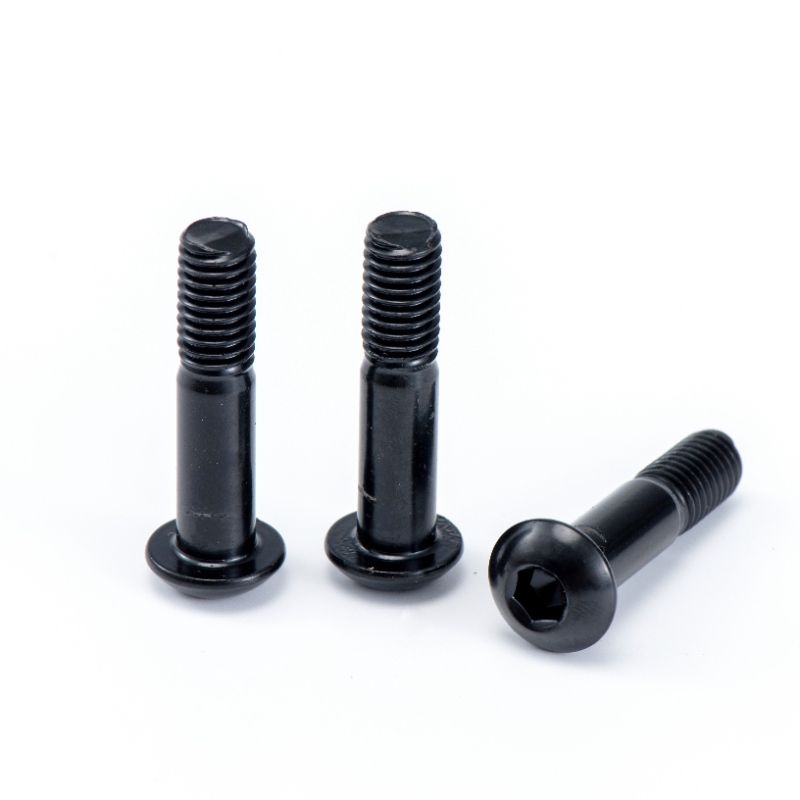Button Head Socket Cap Screws: Technical Overview and Applications
Definition and Characteristics
Button Head Socket Cap Screws are precision Fasteners characterized by their low-profile, rounded head design with an internal hex socket drive. These Screws combine the aesthetic appeal of a smooth domed head with the mechanical advantages of socket drive technology. The head diameter typically ranges from 1.5× to 1.8× the nominal screw diameter, with a height approximately 0.6× the diameter. The internal hex socket conforms to ISO 10664 or DIN 912 standards, with drive sizes ranging from 0.028" (0.7mm) for miniature screws to 3/8" (9.5mm) for large diameters.
Key Technical Specifications:
Head Angle: 82° included angle (standard), with some variants at 90°
Drive Depth: Minimum 0.6× the hex key size to prevent stripping
Material Strength: Grade 8.8 to 12.9 for steel alloys, with tensile strengths from 800 MPa to 1,220 MPa
Surface Treatments: Black oxide (0.0002"-0.0004" thickness), zinc plating (0.0001"-0.0003"), or anodizing for aluminum variants
Torque Values: Typically 75-80% of standard socket head cap screw values due to reduced head height

Advantages Over Other Fastener Types
The design offers several mechanical benefits:
Reduced Protrusion: Head height is approximately 30-40% lower than standard socket head cap screws, with a typical ratio of 0.6× diameter versus 1.0× diameter for conventional designs
Improved Clearance: The rounded profile provides 15-20° greater angular clearance compared to flat-head screws
Drive Integrity: Hex socket design maintains 90-95% torque transfer efficiency versus 70-80% for Phillips drives
Clamping Force Distribution: The spherical bearing surface creates 20-25% more uniform pressure distribution than flat bearing surfaces
Common Applications
These screws find use in precision applications where both aesthetics and performance matter:
1. Aerospace Components
Used in avionics mounting (typically AN/MS standards), with titanium alloys (Grade 5 or 6AL-4V) providing strength-to-weight ratios of 240-260 kN·m/kg. Common sizes range from #2-56 to 3/8"-24 in this sector.
2. Automotive Engineering
High-performance applications include:
Turbocharger housings (withstand temperatures to 900°F/482°C)
Carbon fiber components (using Torx Plus drive variants to prevent cam-out)
ABS sensor mounts (vibration-resistant Nylok patches)
3. Medical Devices
Implant-grade stainless steel (ASTM F138) versions with Ra ≤ 0.8 μm surface finish for cleanability. Common in:
4. Consumer Electronics
Apple's MacBook Pro uses Pentalobe drive button heads for tamper resistance. Typical specifications:
0.8mm pitch for aluminum chassis
Black anodized for aesthetic matching
1.2-1.8 N·m torque values
Maintenance and Care Procedures
Installation Best Practices
Use quality hex keys with ±0.005mm tolerance to prevent socket rounding
Apply 60-80% of the recommended torque initially, then final tighten
For aluminum threads, use anti-seize compound with ≤3% copper content
Corrosion Prevention
For marine environments:
Stainless steel screws should be passivated per ASTM A967
Cadmium plating (0.0003-0.0008" thickness) for saltwater exposure
Annual inspection with 10× magnification for crevice corrosion
Loosening Stuck Fasteners
Procedure for corroded screws:
Apply penetrating oil (0.1-0.3ml) and wait 24 hours
Use impact driver at 200-400 RPM with short bursts
If damaged, employ left-hand drill bits (60-65% of screw diameter)
Storage Recommendations
Maintain 30-50% RH in storage areas
Separate by material to prevent galvanic corrosion
VCI paper wrapping provides 2-5 year protection
Specialized Variants
Shoulder Screw Version
Combines a precision ground shoulder (h6 tolerance) with button head. Used in:
Captive Fastener Design
Features retaining rings or nylon inserts to prevent loss. Common in:





